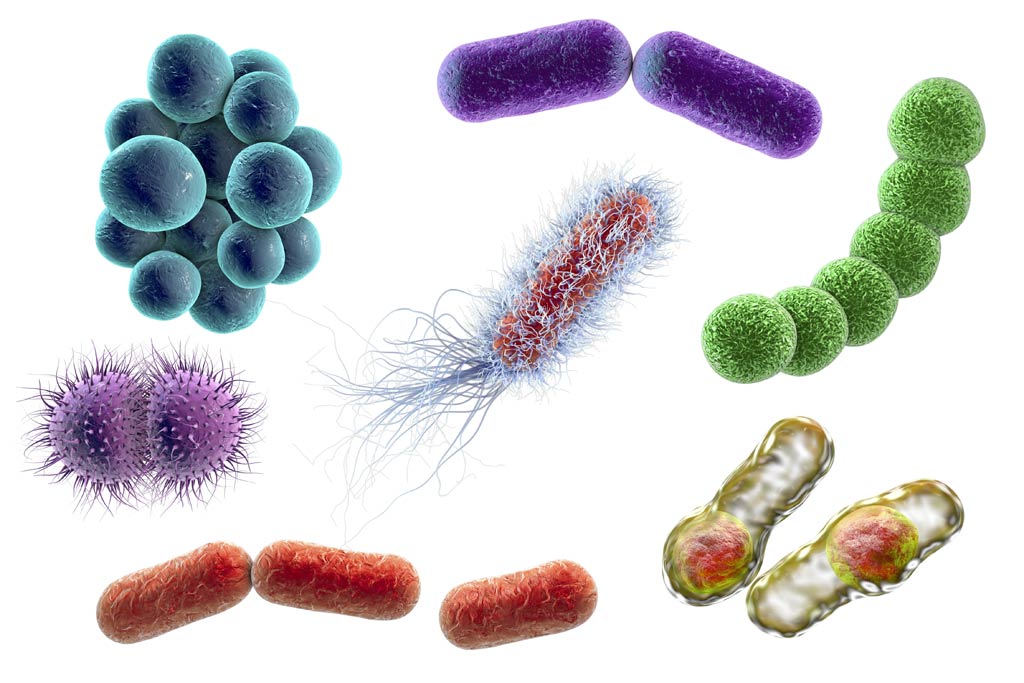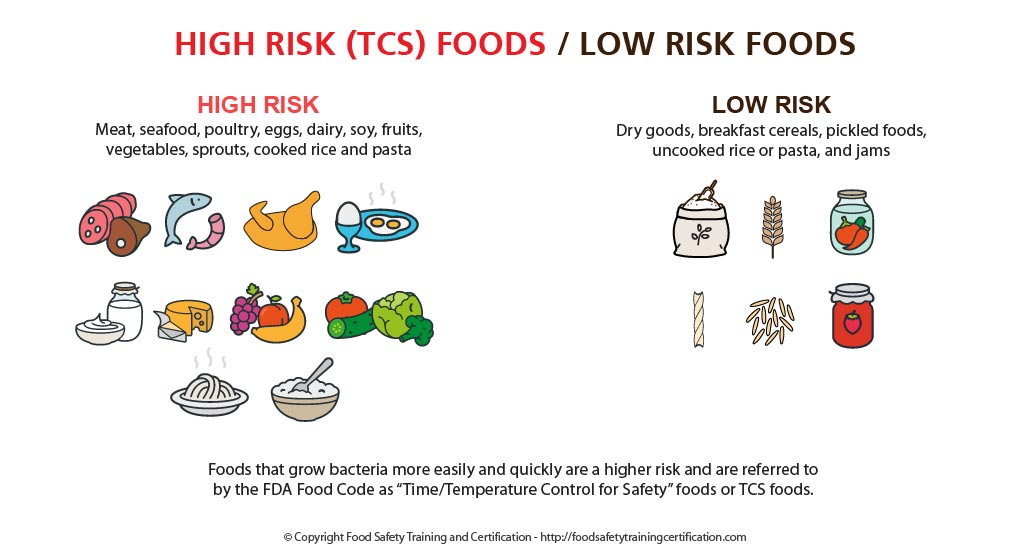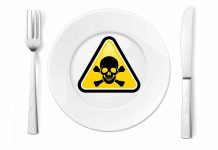Foodborne illness can affect anyone who eats contaminated food. However, certain populations are more susceptible to becoming ill with a greater severity of illness. These groups include:
- Pregnant women;
- Infants and young children;
- Older adults;
- People with weakened immune systems from medical conditions, such as diabetes, liver disease, kidney disease, organ transplants, or HIV/AIDS.
- People taking certain kinds of medications for medical conditions – or receiving chemotherapy or radiation treatment.

Foodborne Illness Statistics
The CDC estimates that each year 48 million people get sick from a foodborne illness, 128,000 are hospitalized, and 3,000 die.
Foodborne illness (also referred to as food illness, food poisoning, and foodborne disease) is mostly caused by pathogens – bacteria, viruses, or parasites (also referred to as biological hazards).
- Learn about cross contamination, cold and hot food safety, best practices for personal hygiene, and foodborne illnesses.
- Food Manager ANSI Certification: SALE $99.00 - Valid in all States
- Food Handler ANSI Training for only $7.00!
- 10% OFF SALE: Enter Promo "TRAIN10OFF" at Checkout
Food Bacterial Growth
Given the right conditions, millions of bacteria can grow on common, everyday foods. The conditions the effect bacteria growth are:
- Time and temperature: Bacteria grow most rapidly in the range of temperatures between 40 °F and 140 °F, doubling in number in as little as 20 minutes. This range of temperatures is often called the “Danger Zone.” So, it’s important not to keep food at this temperature for too long.
- Oxygen: Most bacteria require air to survive, these are called aerobic bacteria. Although some bacteria – called anaerobic bacteria – can survive without oxygen. Which is why it’s still possible to get food poisoning from canned food items.
- Food: Bacteria need a constant source of food to survive, especially protein. High protein foods such as meat are particularly vulnerable to biological contamination from bacteria, which means they’re considered high-risk foods. High-risk foods that bacteria love best include dairy products, meat, poultry, fish and shellfish
- Water: Water is essential to bacterial growth and without it, most bacteria will die. Which is why drying foods as a way of preservation are so effective and have been performed for thousands of years. This includes moisture in ‘wet’ foods such as juicy meats, sandwich fillings, soups, sauces and dressings.
- PH Levels: PH refers to food acidity and is measured on a scale of 1 (acidic) to 14 (alkaline). Most fruits generally have a PH level of between 1 – 5.9, so are considered acidic. While many alkaline foods such as vegetables have a PH level at the other end of the scale. Bacteria thrive in neutral foods that are neither acidic or alkaline and generally have a PH level of between 6 – 8.9. Foods such as meat and seafood are prime examples of neutral foods.

High Risk/Low Risk Foods for Bacterial Growth
High-risk foods are those that have ideal conditions for bacterial growth. This means they’re usually:
- Neutral in acidity
- High in starch or protein
- Moist
Examples: Foods such as raw meat or seafood, cooked rice or pasta, eggs, and dairy are all considered high-risk because they provide the perfect environment for bacteria to grow. This is why it’s essential to practice proper food handling when dealing with these foods.
Low-risk foods are those that don’t have particularly good bacterial growth conditions. These foods are:
- High in acidity
- High in salt or sugar
- Dried
- Canned or vacuum packed
Examples: Low-risk foods like dry goods, breakfast cereals, pickled foods, uncooked rice or pasta, and jams. Although these foods are not common sources of biological contamination, the appropriate care must still be taken when handling them.

Symptoms of Foodborne Illness
- Common symptoms of foodborne illness are diarrhea and/or vomiting, typically lasting 1 to 7 days. Other symptoms might include abdominal cramps, nausea, fever, joint/back aches, and fatigue.
- What some people call the “stomach flu” may actually be a foodborne illness caused by a pathogen (i.e., virus, bacteria, or parasite) in contaminated food or drink.
- The incubation period (the time between exposure to the pathogen and onset of symptoms) can range from several hours to 1 week.
Most people with a foodborne illness get better without medical treatment, but people with severe symptoms should see their doctor.
At risk groups should take extra precautions and avoid the following foods:
- Raw or rare meat and poultry;
- Raw or undercooked fish or shellfish;
- Raw or undercooked eggs or foods containing them (cookie dough and homemade ice cream);
- Fresh sprouts;
- Unpasteurized ciders or juices;
- Unpasteurized milk and milk products;
- Uncooked hot dogs.

Summary
It is very important to understand that certain groups of people have a higher risk for contracting a foodborne illness – and have a greater severity of an illness.


























